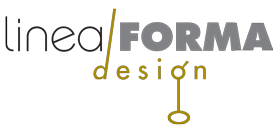As we rapidly move beyond printing and printed materials to integrate new technology in communication, there is more focus on motion, as adding another dimension to a visual presentation provides opportunities to enhance focus, clarity and entertainment value. If well constructed, the audience, ideally, will have absorbed more information and are more likely to trend toward the result you seek: whether a purchase decision, education, or opinion.
We’ve been told that a picture is worth somewhere around a thousand words, give or take. And if that picture is moving, maybe we could square that number. Add in a little music and maybe a voice-over, and the impact is pretty powerful. But it all starts with the motion. Considering the constantly changing imagery the average consumer experiences every day on the internet, TV, and on the street, it seems that if it doesn’t move, we don’t see it. And to a point, the more it moves, the more we notice it, up until it becomes annoying or even dangerous, such as animated billboards or the pop at the top of this post!
Using Apple’s iconic digital advertising as an example, larger than life 3D models of phones and watches spin and swirl around us, close enough for us to examine all their perfect surface details, while a popular song plays along, and a few words at a time name new features. Moving graphics appeal to our emotional, sensual and spontaneous sides, in this case, ideally (for Apple) generating “I want, I need, I’ve got to have” reactions. You can bet a lot of research went into every aspect of the video to make sure it maximized its impact on their target audience. If you need more details or understanding, you can get them quickly at their website, as well as the handy opportunity to purchase one.
Of course, print is not obsolete. Most companies still have printed catalogs, brochures, manuals and pricelists. A catalog arriving in the mail generates more response than an email driving a consumer to a website, albeit at a massive cost difference. But, until the target audience moves exclusively to digital, and cost/benefit analysis shows a clear advantage to it, print remains a serious part of the mix. In the meantime, companies are adding digital imagery that supplement, and will ultimately replace those printed tools. The utility of explainer videos, animations of product features, and in use videos make online materials invaluable to the consumer.
And motion provides more opportunity to direct the viewer’s attention to the information you want them to see. One way is using small pops of animation that guide them to your message.
The process of animating involves changing various combinations of the position, opacity, scale and rotation of images. Another aspect of motion graphics is speed. Its pace is, generally, as fast as the average person can follow the text… or even just a little bit faster. If the viewer’s attention is caught, they will come back again to catch anything they missed the first time. If the pace is slower than the average reader can follow, some viewers will already be getting distracted squirrel! and moving on. Timing is critical.
Want to add some more life and excitement to your story? Get moving! I’ve got a few tricks I can show you. Let’s chat!
Share this:


2 Responses
Kristine Karnezis
How are you and Maren and Travis? We miss you!
Kris & George Karnezis
bgob1
All good here. Let’s set something up.